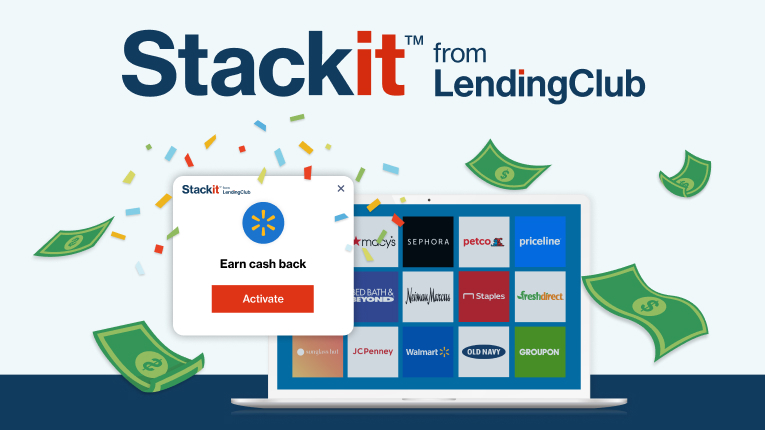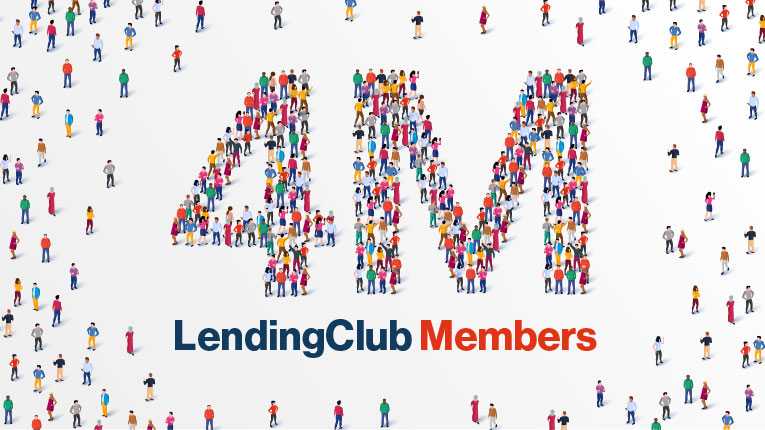Preventing Identity Theft

What is Identity Theft?
Identity theft is the fraudulent collection and use of your private personal or financial information, usually for profit at your expense. And it can happen to anyone.
Once identity thieves have your data, they can attempt to apply for a personal loan, credit, make purchases, or get services under your name. Airline tickets, hotel costs, and expensive merchandise could be charged to your existing credit cards. A new loan or line of credit could be opened in your name without you knowing. Scammers could even file a fraudulent tax return in your name.
At the very least, identity theft can cause a whole lot of unwanted stress and anxiety. But when you know how to prevent identity theft, you can reduce your chances at becoming a target and minimize damage if affected.
How Identity Thieves Steal Information
Identity thieves, or cybercriminals, can get their hands on your private personal and financial information in a variety of ways, including:
Stealing your wallet
Looking through your trash and curbside recycling
Hacking into company databases storing your personal, health, and financial information
Tricking you into revealing your sensitive information over the telephone, in person, or online
Figuring out your online passwords and logging into your personal accounts
Online Fraud and Identity Theft Increased During the Pandemic
As more people connected to less secure home WiFi networks and accessed new government and financial websites, the pandemic created new opportunities for scammers. In addition to more common fraud attempts—like scammers posing as banks, government agencies, and healthcare providers—criminals are also attempting to sell fake products they claim will protect against the coronavirus, and then steal credit card numbers when these products are purchased.
Voice phishing scams, sometimes called “vishing,” in particular is on the rise amid the pandemic. Phishing is when crooks pretend to be from a well-known company or government agency and trick vulnerable people into revealing their Social Security number or personal information.
They then use that information to make purchases, take over their victims’ accounts, get tax refunds, or apply for unemployment benefits. And during a time when millions of people are relying on unemployment assistance, this can be particularly devastating.
7 Simple Tips to Minimize Your Risk of Personal Identity Theft
You can never be too careful when it comes to protecting yourself from identity theft. Whether that’s being mindful when throwing away bank statements or screening suspicious callers, arming yourself with information can help mitigate risk when it comes to identity theft.
Arming yourself with the right information and tools can help protect you from identity theft and scams. Whether you’re being mindful of how you toss old bank statements or screening suspicious callers, you can take simple steps to mitigate your risk.
1. Password protect your devices.
Use a password on your smartphone and laptop, even if you think it’s in a secure location. That way in the unlucky chance it’s stolen, a thief can’t use it to steal your identity. Luckily, there’s usually a way to secure your device using even more private means—like facial recognition or touch id.
Some devices may also have a tracking feature that, in addition to showing you where it is, enables you to lock it remotely if it’s lost or stolen. Taking advantage of these new technologies can help alleviate the potential problems that come with a lost or stolen device.
2. Be mindful on social media.
Think carefully about what you post on Facebook, Instagram, LinkedIn, and other social media apps. For example, if you’ve posted your first pet’s name to Facebook, don't use “What’s your first pet’s name?” as the secret question for your online credit card account.
3. Use strong passwords.
Secure your online accounts with strong passwords. Using a computer-generated password with a random set of numbers, letters, and characters can be extremely difficult to crack as opposed to a word or notable date.
New password-saving apps like iPhone’s Keychain can help keep your password safe without you needing to memorize it. If you’re unable to use a strong password, experts recommend using a lengthy phrase with numbers and characters to help better secure your private information.
Experts also recommend not using the same password on multiple sites. That way, if your password is compromised, criminals won’t be able to hack multiple accounts.
4. Shred sensitive documents.
Shred ATM receipts, credit statements, credit cards, and bank statements before throwing them away. Criminals have been known to rummage through garbage and recycling bins looking for sensitive information.
5. Be careful when disclosing financial information.
Never give your credit card number over the telephone, unless you made the call and you’re certain you're dealing with a legitimate company.
Also, don’t provide any private or personal information—like your full name, birth date, or Social Security information—to random callers, and learn how to spot tricks scammers use. For example, a legitimate lender or financial institution will never ask you to wire them money over the
phone.
6. Regularly review statements and credit reports.
Review your bank account and credit card statements monthly. Notify your financial institution, bank, or credit card company if you find any unauthorized transactions.
Make sure you review a copy of your credit report at least once each year. Alert the credit bureau in writing of any questionable transactions, and follow-up until they are removed.
If you lose your wallet, credit card, or debit card, don’t wait for a fraudulent charge to contact your bank or financial institution. Immediately freeze your credit cards to prevent fraudsters from making purchases, and sign up for a credit monitoring service that will alert you about suspicious transactions.
7. Use two-step authentication.
Use two-step authentication wherever possible. Two-step authentication provides an additional layer of protection beyond your username and password. With two-step authentication, a website requires you to enter a personal identification number (PIN), verify your login attempt from another device, or provide a code it sends you by text or email.
At LendingClub, we offer two-step authentication to help protect against fraudulent use of your account. If you’ve activated two-step authentication, we’ll email you a code you must enter after login before you can gain access to your member account.
To activate two-step authentication on your LendingClub account: Login to your member account, select Settings, and opt-in for two-step authentication.
What is Digital Identity Theft?
Digital identity theft is when someone steals your personal information online by either planting malicious software on your computer or hacking into a system where your information is stored. And it can happen virtually anywhere.
As buying goods and managing your finances online becomes easier and more convenient, identity thieves are finding more ways to hack even the most secure systems.
Sadly, data breaches are becoming a common occurrence. There were 3,950 data breaches in 2020 alone, and even the most secure establishments—like credit bureau Equifax and the DMV—were targeted by hackers. Though safeguarding your information against online threats is more crucial than ever, it’s equally important to know what to do if you're an accidental victim.
What to Do If You Are a Victim of Identity Theft
Falling victim to identity theft can be a stressful time—both mentally and financially. But you aren’t alone, and there are processes in place to help you recover.
1. Add a fraud alert to your credit report.
A fraud alert prevents an identity thief from opening up any more accounts. As soon as you make the report to one credit bureau, that bureau is required to notify all the others on your behalf. You can contact any of three major credit bureaus to place a fraud alert on your credit report:
Equifax: (800)-525-6285
Experian: (888)-397-3742
TransUnion: (800)-680-7289
Keep in mind, a fraud alert essentially freezes your credit report. This means no new accounts can be opened unless you contact the bureau to have the security freeze temporarily lifted. This is helpful in preventing fraudsters from opening new accounts, but it adds a step if you need to use your credit report.
Even if you are not a victim of identity theft, it’s always a good idea to stay on top of your credit report. You can obtain a free copy of your credit report once per year by visiting annualcreditreport.com. Because many Americans are feeling anxious during these unprecedented times, the three credit bureaus are offering weekly access to monitor their credit report for free through April, 2022.
2. Review your credit report for fraudulent accounts.
You may find accounts you never opened with companies you’ve done business with, as well as accounts with companies you’ve never heard of. Also check for any unauthorized activity on your legitimate accounts.
3. Report and close all fraudulent accounts and activity.
Contact the fraud department of each company where a fraudulent account was opened in your name. Ask for written confirmation that the accounts have been closed. Report unauthorized charges on existing accounts; your lender may cancel any unauthorized charges and change your account number.
4. File a police report.
The police report creates an official record that you were the victim of a crime. This will support your claims with the credit reporting agencies and creditors as you work to remove fraudulent debts or accounts from your credit record.
5. File a complaint with the Federal Trade Commission.
Filing a report with the FTC helps the government track and respond to identity theft. You can file a report online or by calling 877-439-4388.
Protect Youself Against Identity Theft with LendingClub
If you have any questions, concerns, or if you believe identity theft has impacted your LendingClub account, email or call Member Support immediately at 888-596-3157.
Identity Theft FAQs
1. How can you prevent identity theft?
You can minimize the risk of identity theft online by keeping all of your devices up to date with the latest security software, monitoring your credit scores and credit reports, only using trusted websites when shopping online, and always maintaining strong passwords.
2. What are the warning signs of identity theft?
Fraudulent charges on your credit cards or bank account statements are one of the biggest indicators of identity theft. You may also experience irregularities with your online accounts—like new users being added without your knowledge or receiving emails informing you of reset passwords.
3. What’s the first thing I should do if my identity has been stolen?
The first thing to do is alert all the companies where fraud occurred. This can mean calling your bank or credit card provider, or reaching out to the website where your password was changed. Ask them to close or temporarily freeze your account, and then change all your logins, passwords, or PINs.
You can also place a free, one-year fraud alert on your credit report by contracting one of the three credit bureaus—Equifax, Experian, or Transunion. You only need to contact one credit bureau—they’ll notify the others on your behalf. This alert will prevent the identity thief from opening up any more accounts in your name.
You May Also Like










